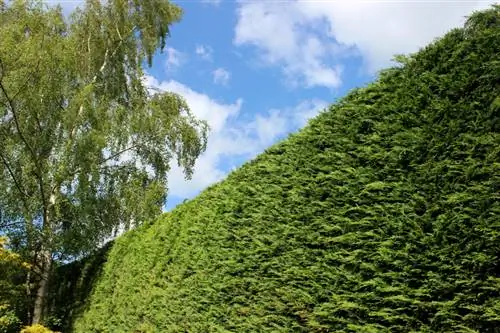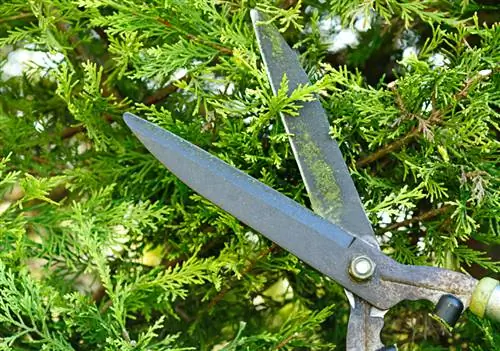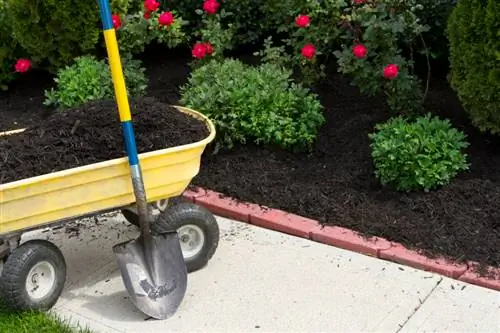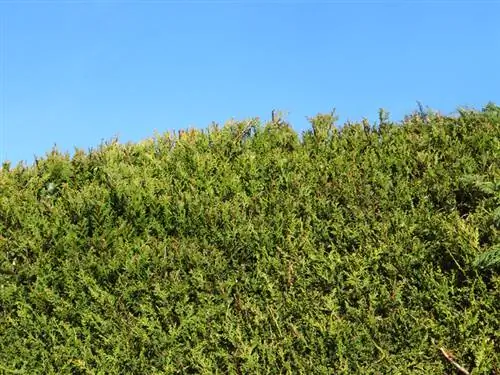- Author admin [email protected].
- Public 2023-12-16 16:46.
- Last modified 2025-01-23 11:20.
Mock cypresses are grown as hedges in many gardens. They are fast-growing, evergreen and become opaque within a few years. However, such a hedge also has its disadvantages. It needs a sunny location. Without care, it quickly becomes unsightly and bald from below.

How do you plant and care for a false cypress hedge?
Mock cypress hedges are planted in a sunny place, 30-50 cm apart. The soil is loosened, mixed with compost and drained if necessary. Regular pruning, fertilizing and watering are required in the first few years. Later, only an annual cut is necessary.
Prepare the floor
- Loose the soil
- Dig planting holes
- mix with mature compost
- loose up damp soils with sand
- Create drainage if necessary
The planting distance between the false cypresses should be between 30 and 50 centimeters, depending on the eventual height.
Do not place false cypress hedges too close to fences or walls. You should leave at least 50 centimeters of space for hedge care.
The distance that must be maintained to neighboring property is regulated by the municipal regulations.
Planting a hedge of false cypress trees
Stake the path of the hedge and use a string to straighten the cypress hedge.
Place the false cypresses so that the ball is completely covered with soil.
Water the plants well, but make sure that the moisture does not build up.
You need to trim cypress hedges regularly
Mock cypresses in the hedge need regular pruning. Otherwise they will become bare from below and no longer offer good privacy protection.
Cut in spring and autumn or once after June 24th, St. John's Day.
When the hedge has reached the desired height, trim the tips. The new shoots cover the resulting brown spots within a few months.
Hedge care in the first years
Until the false cypresses have grown properly and can look after themselves, you must fertilize and water the hedge regularly. Later the plants take care of themselves.
A mulch cover is recommended because it prevents weeds from emerging and provides the false cypress with nutrients.
Non-toxic alternative to false cypress hedges
Mock cypresses, like all arborvitae, are poisonous in all parts. They are therefore not suitable for planting in gardens with small children and pets.
A good alternative is the hornbeam. It is non-toxic and is even easier to care for than the false cypress.
Tip
Hedges that consist solely of false cypresses often appear artificial and boring. Create a natural lightening by placing thuja, snow jasmine or hornbeam in between.






